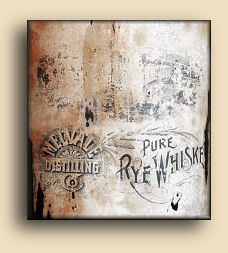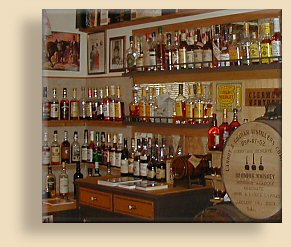American
Whiskey
Rye Distilleries of Eastern Pennsylvania &
Maryland
February & June,
2006 |
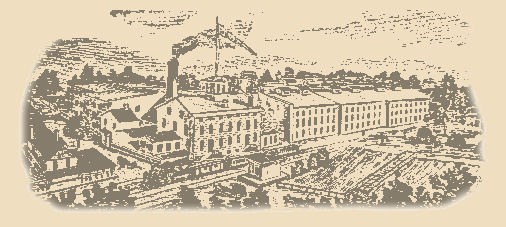
DURING THE 1880s John T. Cummings opened the Melvale
distillery on Cold Spring Lane in the Jones Falls area north of Baltimore. The
distillery was built around an existing stone structure, itself established
fifty years earlier, which had been a water-driven sawmill, also used for flour
and cotton.
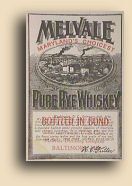 The
building still stands today, now as the central
unit of the Fleischmann Vinegar Distillery (Burns Phips Foods, Inc.), the site's
current occupant. None of the other original Melvale buildings are believed to
remain, although some of the old Fleischmann buildings themselves appear to date
back to the 1920s and '30s.
The
building still stands today, now as the central
unit of the Fleischmann Vinegar Distillery (Burns Phips Foods, Inc.), the site's
current occupant. None of the other original Melvale buildings are believed to
remain, although some of the old Fleischmann buildings themselves appear to date
back to the 1920s and '30s.
In its day, the Melvale brand became one of the most prestigious of Maryland's
rye whiskeys. A 1902 salesman's rate book from M. Durner & Co. of Cincinnati
shows Melvale wholesaling at $1.45 a
quart.
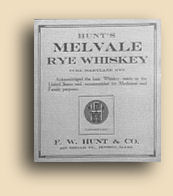 For perspective, it should be noted that a
1906-07 price book from the Tennessee Dist'g Co. of Nashville lists Old Taylor Bourbon
for $1.00 per quart bottle ($10.00/case).
For perspective, it should be noted that a
1906-07 price book from the Tennessee Dist'g Co. of Nashville lists Old Taylor Bourbon
for $1.00 per quart bottle ($10.00/case).
We haven't found an example of the Melvale brand produced (as an imitation, of
course) after prohibition, although there may have been some. One measure of the
brand's prestige might be the number of "sound-alike" brands that became
successful, perhaps partially due to customer confusion. Brands such as
Melville, Melwood, Mell-Wood, and Melbrook were examples. This picture shows a
label for Melvale Rye Whiskey marketed by F. W. Hunt & Co. of Boston,
Massachusetts, most likely prior to 1920.
 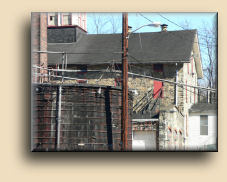 |
|
Click any of these photos to see larger pictures. |
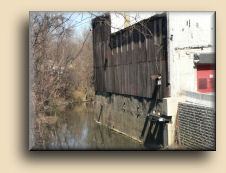  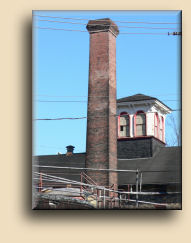 |
In 1931, Henry Walters, the son of world-class art and whiskey
collector William T. Walters, passed away, and an almost insignificant portion
of the very large estate he left to his wife Sarah was his (and his father's)
collection of Maryland Rye whiskey. Accumulated prior to
prohibition, the many cases of full bottles had lain in the cellar of their home
for decades, and they continued to do so.
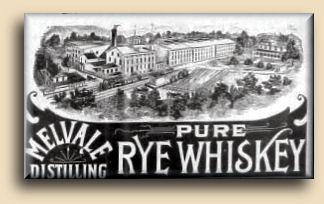 Mrs.
Walters did not drink and was most likely unaware of the existence of these
increasingly rare objects. She died in 1943, and they turned up as part of her
estate sale, held in November of 1943 at the Ritz-Carlton Hotel on Park Avenue
in New York City. In his definitive study on Maryland Rye whiskey for the
Maryland Historical Society, Baltimore Sun editorialist and author James H.
Bready notes that, ".. .of sixty-three
lots catalogued and priced by Peter Greig of New York, the final dozen were 982
quarts and fifths of “Maryland Rye Whiskies”—specifically, Baltimore Club,
Melvale (case-dated 1887, 1888, 1890, 1891), Orient (label-dated 1890, 1892) and
Sherwood (stamped 1911).. .A small 1943 sticker was affixed to the back of each
bottle.
Mrs.
Walters did not drink and was most likely unaware of the existence of these
increasingly rare objects. She died in 1943, and they turned up as part of her
estate sale, held in November of 1943 at the Ritz-Carlton Hotel on Park Avenue
in New York City. In his definitive study on Maryland Rye whiskey for the
Maryland Historical Society, Baltimore Sun editorialist and author James H.
Bready notes that, ".. .of sixty-three
lots catalogued and priced by Peter Greig of New York, the final dozen were 982
quarts and fifths of “Maryland Rye Whiskies”—specifically, Baltimore Club,
Melvale (case-dated 1887, 1888, 1890, 1891), Orient (label-dated 1890, 1892) and
Sherwood (stamped 1911).. .A small 1943 sticker was affixed to the back of each
bottle.
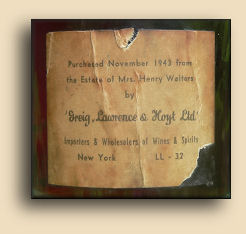 A few such certified Walters Sale relics, emptied, still turn up in the
antiques market".
A few such certified Walters Sale relics, emptied, still turn up in the
antiques market".
Well, not all of them were emptied. And recently one turned up for sale
in an EBay auction. The original Melvale label has not weathered the ensuing
112+ years as gracefully as it might have. But the official sticker from the
1943 Peter Greig sale is more or less unscathed, the lead-capped cork seal is
still intact, and the liquor inside looks clear and bright (and later proved to
be delicious). The seller, an antique dealer, but not one specializing in
antique spirits, has failed to include the word "whiskey" in the listing, and
thus the auction lies "beneath the radar" of most peoples' search criteria. It
therefore did not sell for as much as it easily could have, and what it did sell
for was John's bid. So, on Income Tax day 2006, John learned that we've acquired
what may be the only unopened bottle of 19th century Melvale Pure Maryland Rye
whiskey ever likely to be tasted by living people in the 21st century.
Fifteen minutes later, John sends an email to James H. Bready to
tell him of the purchase and ask for a chance to share some with a man who has,
unwittingly, been an enormous inspiration to these web pages and to so many
others interested in the history of the rye whiskey industry in Maryland.
Jim Bready is not terribly well-known outside of the greater Baltimore area, but
within those confines he had been a familiar daily encounter for millions, among
several generations of Baltimoreans. Seen here in a 2006 photo, Bready has spent
well over fifty years as an editorialist and columnist for Baltimore's Sun
newspapers, and he still occasionally contributes articles.
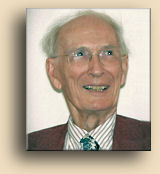 He was also the
Baltimore correspondent for Time, Life, and Fortune magazines and the author of
This Parish Under God, a history of the Church of the Redeemer and The
Home Team, a history of baseball in Baltimore. In 1990, he wrote a
comprehensive article on the history of the pre-Prohibition Maryland rye spirits
industry for the Maryland Historical Society and the Library of Maryland
History. The article was published in the Winter 1990 issue of the Maryland
Historical Magazine. A couple years ago, Linda obtained an original copy of that
magazine and it has been a never-diminishing fountain of information and
knowledge concerning the whiskey business in Baltimore and all of Maryland.
Other sources we've tapped in our search for information have often turned out
to be quoting from or obviously influenced by this work.
He was also the
Baltimore correspondent for Time, Life, and Fortune magazines and the author of
This Parish Under God, a history of the Church of the Redeemer and The
Home Team, a history of baseball in Baltimore. In 1990, he wrote a
comprehensive article on the history of the pre-Prohibition Maryland rye spirits
industry for the Maryland Historical Society and the Library of Maryland
History. The article was published in the Winter 1990 issue of the Maryland
Historical Magazine. A couple years ago, Linda obtained an original copy of that
magazine and it has been a never-diminishing fountain of information and
knowledge concerning the whiskey business in Baltimore and all of Maryland.
Other sources we've tapped in our search for information have often turned out
to be quoting from or obviously influenced by this work.
In the final paragraphs of the article, Bready evokes a powerful, but
disconcerting nostalgia for times that neither the reader nor the author (who
would have been but fourteen when prohibition ended) ever directly experienced.
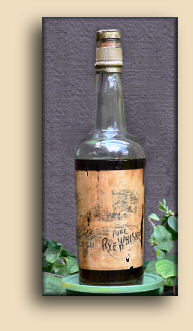 He
notes that "In current times, the various old-liquor auctions have listed no
whiskies from Kentucky, Pennsylvania or the like of anywhere near such
venerability.. .What physical evidence of Maryland Rye during its ascendance is
likely to last longest? In 1990 unbroken-seal quarts of Mount Vernon,
Monticello, Waldorf and Sherwood (and very likely a few other brands) remained,
all seventy-plus years old, all in private Maryland hands. The owners were of a
mind to preserve, not uncork, these rarities. As for the sites of their
contents’ manufacture, little still stood, other than the stone Melvale
Distillery buildings alongside Jones Falls Expressway at Cold Spring Lane..
.[And w]hat of the fluid itself? What did olden-time Maryland Rye taste like? ..
.As to pre-1920 Maryland Rye, variations between brands and within a single
brand were, it would seem, more a matter of barroom conversation than of printed
pronouncement. Generalizing, old-timers described Maryland Rye as having a heavy
body, robust rather than subtle, yet complex, and with a decided after-taste".
He
notes that "In current times, the various old-liquor auctions have listed no
whiskies from Kentucky, Pennsylvania or the like of anywhere near such
venerability.. .What physical evidence of Maryland Rye during its ascendance is
likely to last longest? In 1990 unbroken-seal quarts of Mount Vernon,
Monticello, Waldorf and Sherwood (and very likely a few other brands) remained,
all seventy-plus years old, all in private Maryland hands. The owners were of a
mind to preserve, not uncork, these rarities. As for the sites of their
contents’ manufacture, little still stood, other than the stone Melvale
Distillery buildings alongside Jones Falls Expressway at Cold Spring Lane..
.[And w]hat of the fluid itself? What did olden-time Maryland Rye taste like? ..
.As to pre-1920 Maryland Rye, variations between brands and within a single
brand were, it would seem, more a matter of barroom conversation than of printed
pronouncement. Generalizing, old-timers described Maryland Rye as having a heavy
body, robust rather than subtle, yet complex, and with a decided after-taste".
It was an after-taste that Bready had never personally
experienced, and if there were ever a person who deserves to be present when
this bottle of 19th century Melvale Pure Rye is opened it would be Jim.
So we email him.
And call him on the phone.
And arrange to travel to Cockeysville, Maryland, where we could find a hotel
with livingroom suites to arrange a tasting party with Jim and his lovely wife,
Mary on June 15, 2006 and make a day of it.
We've invited a few friends, Sam and Amy Komlenic, Howie Stoops, Chris and Cathy Sigmon, and Dave Gonano, each of whom is bringing bottles of their own rare old Maryland and Pennsylvania rye whiskeys to share.
Jim Bready is eighty-five (or so) years young, and he is quite aware of his body's limitations and fragilities. There's nothing fragile or foggy about his mind, though, and if it recognizes any limits at all they sure aren't apparent this afternoon! He even brings along a bottle of Maryland rye from his collection, made by John H. Farber sometime before 1900, as his own contribution to the party's fare, despite being the guest of honor.
But the real surprise for us turns out to be Mary.
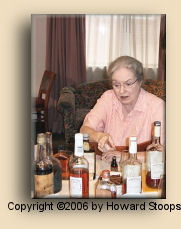 Whiskey has always
seemed to be a rather
gender-preferent (if not entirely gender-specific) subject; it's unusual to find
women who understand and appreciate it, let alone actually enjoy the stuff. To find a woman who is not only
appreciative but who also possesses a deeper understanding of Maryland Rye than most men will
ever obtain is truly a delight.
Whiskey has always
seemed to be a rather
gender-preferent (if not entirely gender-specific) subject; it's unusual to find
women who understand and appreciate it, let alone actually enjoy the stuff. To find a woman who is not only
appreciative but who also possesses a deeper understanding of Maryland Rye than most men will
ever obtain is truly a delight.
John later notes a feeling that, although this is a polite little private affair, had this event been set instead in a rough Maryland steelworkers' bar where everyone drank rye, spat on the floor, and smoked cigars, Mary could out-drink, out-cuss, and probably out-cigar-smoke two thirds of the clientele... and probably deck one of 'em if he started getting too friendly!
We especially enjoy her story about how she learned, at an early
age, two important facts about women's social and professional organization
meetings: (1) they're mainly an excuse for everyone to bring "a little
something" to pass around and drink, and (2) if your particular "little
something" was rye whiskey, most of it would still be left for you to take back
home with you after the "meeting".
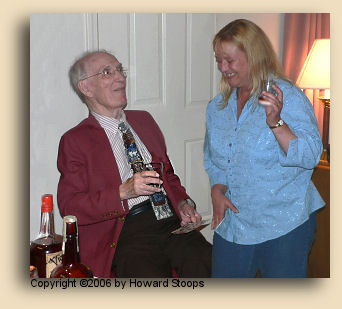
Linda, meanwhile, has completely fallen in love with Jim, and never lets him out of her sight. Seen here, she's showing him her photographs of our whiskey collection. The shock on his face (no this is not a posed shot) is in reaction to learning that nearly all of those bottles are open and available to be tasted.
Jim's 1990 essay closes with the following anecdote:
".. .One sufficiently interested newcomer put her pre-1920 glass down again
saying, 'A bit like varnish remover. Or a liquid form of sandpaper.' Her spouse,
drinking from the same ancient bottle, remarked, 'When properly made
and aged, as this seems to have been, a warm, mellow, care-lightening
experience.' Maryland Rye took getting used to, but many Maryland drinkers
started young. The loyalty, once formed, was strong."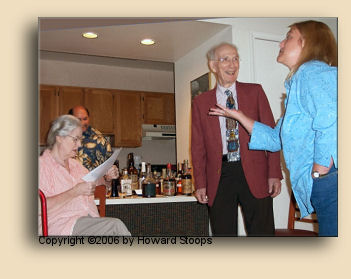
After spending the afternoon
of June 15, 2006 with them, it seems pretty clear who that couple probably was.
And if Mary Bready says a Maryland rye tastes like varnish remover, you can bet
your sweet bippie that's because it does -- she has the experience to back such
a claim up.
And if you'd like Mary to teach you a little about Maryland rye
loyalty in a hurry, just start extolling the virtues of imported whiskey (or
even bourbon).
